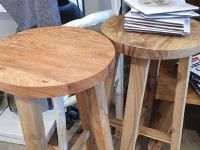Berryfruit and Grapes
A 6 minute read by Peter Worsp
Berryfruit have become popular in recent years because of the great taste and their proven health properties. Hence, this easily grown group of plants is a must for all gardens.
Nowadays gardens are smaller and it is difficult to find space, but if you choose carefully they can fit. Most berryfruits produce large quantities on small easily managed plants. Brambles require a fence support, but others form small easily managed bushes.
At a Glance
- Warm sunny position
- Choose fruits and varieties that suit your area
- Fertiliser and water
Some berry fruit such as strawberries have always been popular. But others such as raspberries, boysenberries, blackberries, currants, and blueberries have all become popular because of their vitamin rich and anti oxidant content. In addition they are great tasting, and are relatively easy to grow.
Where to Plant
Choose a warm sunny position, sheltered from strong winds.
- Brambles (raspberries, boysenberries, blackberries) will grow in most soils
- Blueberries require a free draining but moist soil which is acidic (do not use lime or dolomite)
- Strawberries require a free draining soil with lots of compost. They should not be grown in the same soil for more than two years consecutively
In clay soils, raise plantings and add lots of compost.
When to Plant
- Brambles are sometimes available in winter as ‘bare root’ plants, but usually in late spring in pots
- Blueberries and grapes are available most of the year, but most commonly in summer
- Strawberries are available as ‘bare root’ plants in May—June, or as plants in punnets, or pots in spring
How to Plant
Refer to our page on How to Plant.
Mulching
This is a highly recommended practice as it suppresses weeds and conserves moisture in the soil. A layer of mulch, compost or similar laid on the surface in October will prevent moisture loss and greatly benefit the plants.
Feeding
- Berryfruit generally benefit from an annual dressing of lime or gypsum in August, followed by an application of general fertiliser in September
- Gypsum can be used on blueberries but do not use lime. Use an acid fertiliser on blueberries, such as azalea or rhododendron fertiliser
Watering
Many berryfruit can withstand considerable dry periods, but watering will greatly improve the fruiting.
Pests and Diseases
Although there are a number of pests and diseases that can attack berryfruit, they tend to be minor or easily controlled. The major pest is birds.
- Blueberries, currants, and gooseberries will almost always require netting for protection
- All other berryfruits may require netting where bird pressure is high – for example where there are lots of trees nearby
- Raspberries, blueberries, and currants are relatively disease free, although raspberries will get botrytis grey mould if there is wet weather during picking
- Boysenberries and blackberries may suffer from dryberry disease, caterpillars, and mites
- Gooseberries are attacked by powdery mildew although some varieties are resistant
- Strawberries suffer from soil fungus diseases best avoided by not growing them in the same soil for more than two consecutive years. Other diseases of strawberries are leaf spot and botrytis grey mould, in wet weather
- Grapes may suffer diseases and pests in wet or humid weather. The main ones which are likely to affect yield and quality are downy mildew, botrytis grey mould, and black spot
For aphids mites and caterpillars spray with Yates Mavrik.
For downy mildew, dryberry, leaf spot, and botrytis grey mould - spray with Grosafe FreeFlow Copper.
These sprays are all low toxicity and environmentally friendly. Be sure to observe the waiting time between spraying and harvest listed on the label.
Refer to the Fruit Pest & Disease information sheet for full detailed information.
Pruning
Most berryfruits grow on bushes or vines. Hence there is little required to shaping.
Pruning for continuous crops and to keep the bush or vine under control requires some attention.
Raspberries are upright canes and fruit on new seasons growth which originates from the previous years new canes that have emerged from the soil. Therefore in July, cut out all old canes which carried last seasons crop. These canes are distinguished from the one year canes which you want to retain, by their grey colour, and usually by this time are dry brittle wood. The canes to be retained tend to be light brown in colour and still very green and alive. These retained canes can then be shortened back to about two thirds their height.
Tying 4 - 5 canes together at the top is a common practice to help keep them upright when new growth starts in spring. The new canes for the following year’s crop will emerge and grow in late spring summer. They will require tying up for support. Suckers that emerge 20 cm or more away from the base should be removed.
Boysenberries and blackberries require to be grown on a fence / wire support for the long limp canes. They fruit on new season’s growth which originates from vines grown the previous summer - autumn. (In many areas, blackberries will also fruit on current season’s growth which means they can be cut back hard in winter.) In July prune out all old canes that carried fruit last season, and tie up all the new canes that have been grown through the autumn.
Currants fruit on wood grown the previous season as well as older wood. Hence, in July prune out really old wood and shorten the bush by about one quarter to keep it contained.
Gooseberries fruit on spurs which last several years, but best fruit is on young ones, so cut out aged wood.
Blueberries fruit on wood grown the previous season. Therefore to both keep the bush under control and to maintain good fruiting, prune the growth that has carried the crop as soon as it is picked, in summer. This encourages new growth from a lower level maintaining a compact bush. Water well in summer to encourage this new growth.
Grapes require a support which could be a fence or pergola. Initial pruning will be to establish the main leaders. Once this has been done, prune for fruiting as follows.
Grapes fruit on new seasons growth. Hence in July, cut back to within 1-2 buds of the main leaders.




